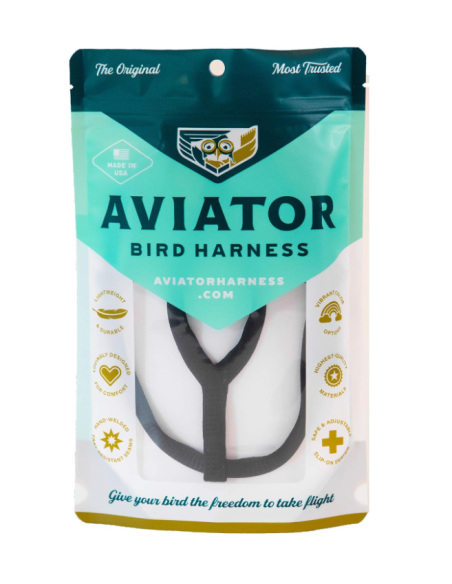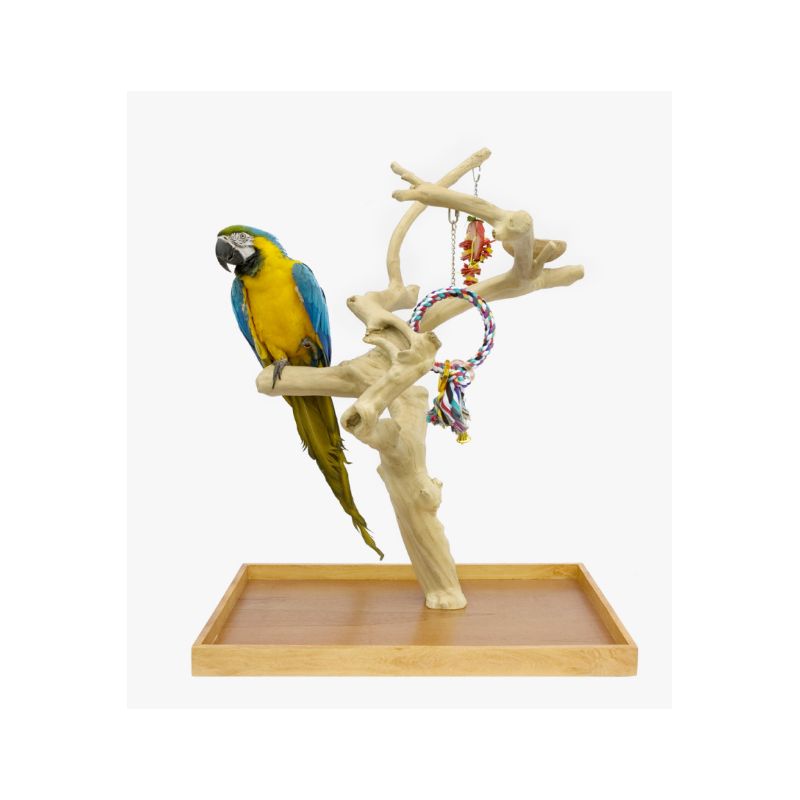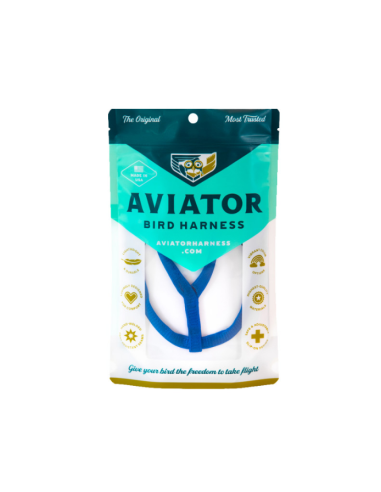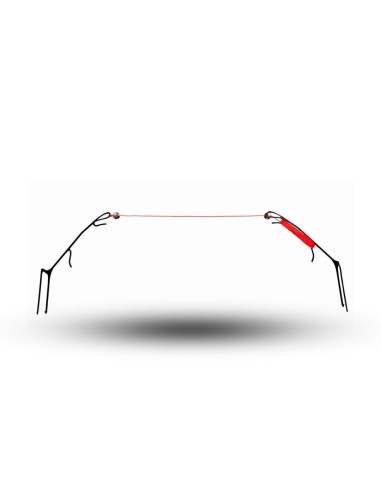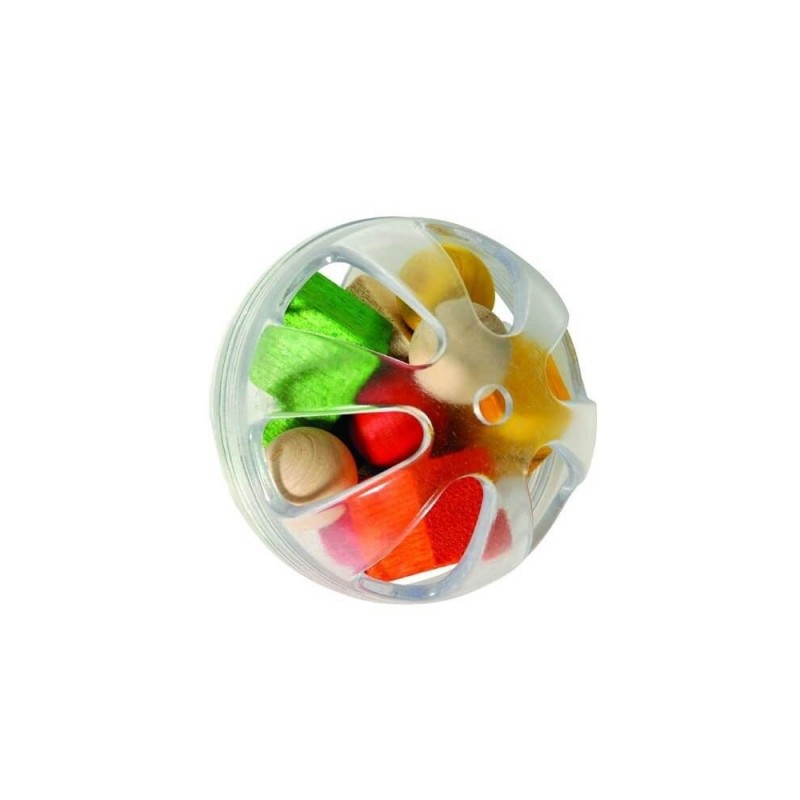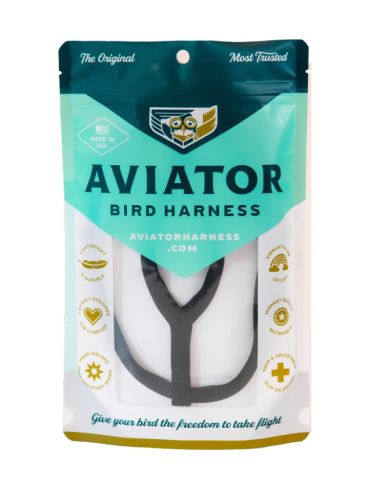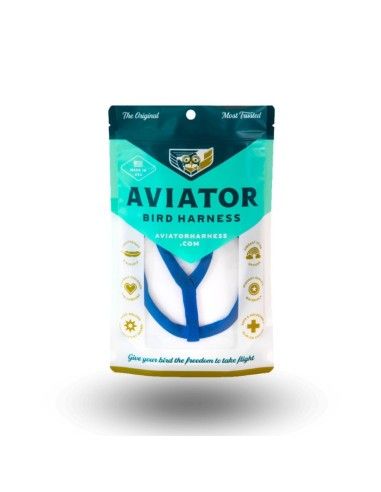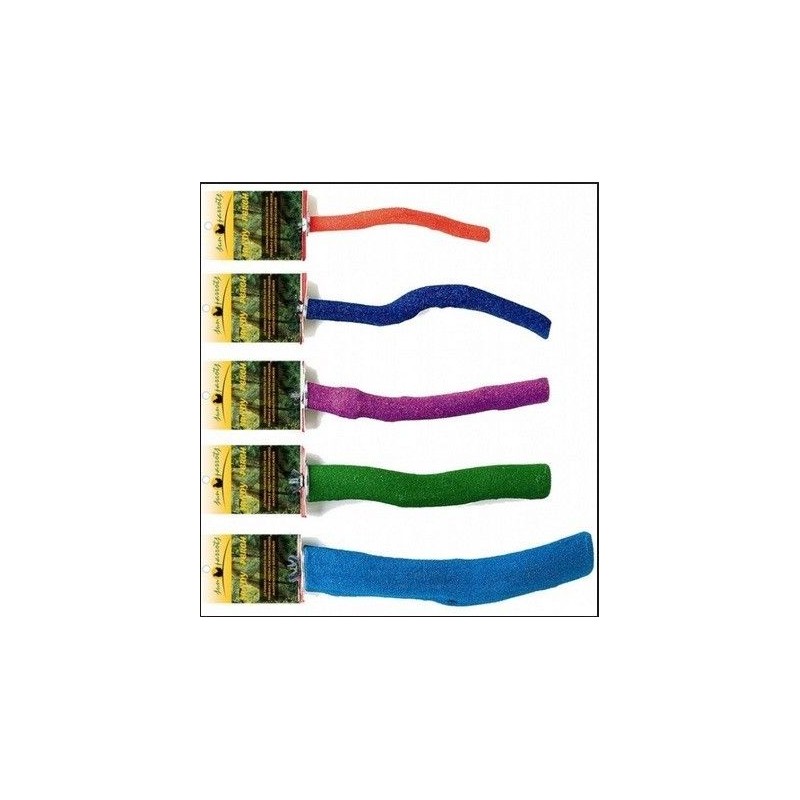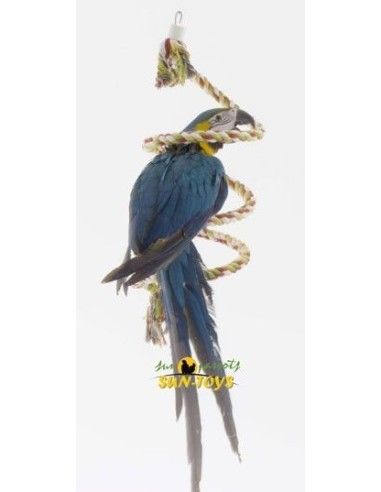









-USE OF THE HARNESS AVIATOR-
THE HARNESS AVIATOR IS GUARANTEED TO BE LEAK PROOF, BUT WE CANNOT GUARANTEE THAT YOU DO NOT HAVE ANY DEFECT OF FÁBRICACIÓN. FIRST OF ALL WHEN YOU OPEN THE BOX CHECK THAT THE HARNESS IS PERFECT IN ALL THE JOINTS AND SEAMS.
The harness AVIATOR can improve the life experience of your colleague for years. Take your time to read, understand and follow these instructions to ensure a positive experience.
NOT to TEACH the Aviator to your partner until you have read and understood the introduction phase and the installation process.
An introduction correct and gradual of the harness to your bird is crucial to the success of the AVIATOR.
IMPORTANT!!! Although you can easily install the AVIATOR on most young birds it is important to follow the instructions. Sometimes the young birds allow a negative experience for several times until they begin to resist. At this point it is very difficult to make them change their mind. You may not realize they have made a mistake until it is too late. ONLY use the harness AVIATOR when your parrot is going to have a fun experience and stimulating. If it is going well, will forget it soon of the harness and to associate the AVIATOR with a positive experience. Don't put the harness JUST to get used to wearing it. The will get used to wear it while you are enjoying a fun experience. NEVER leave the harness on a bird without supervision.
PREPARING your pet to meet the harness: follow these steps important greatly facilitates the placement and use of the harness.
First: there is to accustom your pet to accept two new behavior that will facilitate the installation of the harness.
- Most of the parrots allow their owners to them to be petted under the wings, but very few like them, raise them and hold the wings when they are in a static position. The parrots do not like this position because they feel vulnerable to predators. Work with your pet until you can pick up and keep the wings for a few seconds. You can achieve this goal more easily if you pat gently on the side. As soon as you start to resist, lower to them the wing. Try this exercise several times a day, few minutes each time.
- Most of the birds have never had anything on his head or around the neck. Practice sliding your hands on your head and neck as if you were sliding the harness over your head. It then uses a toy with which you are familiar, bring it close to your head touching and rubbing his beak, head and neck. Start with your favorite toy. Once you accept relaxed this exercise test with other toys.
Second: do Not attempt to put the AVIATOR on until you are familiar with it. Introduce him to the AVIATOR as you would with a new toy. This phase is easy for parrots that like to have new toys. For other more scary is required a gradual approach and it can take several days.
SUGGESTIONS:
- For parrots, very scary, to put the Aviator in sight and go with little by little for several days.
- Put on the harness wrapped around the neck or wrist while you are with your parrot.
- Leave the harness on a table or the top of the cage or some place where the parrot is going to go away.
- While you play with your parrot leaves the harness intermittently touch or rub your head or body.
- Hang the harness in his cage as you would with any toy
USE:
Your pet must learn two things about the Aviator. First to not engaging the fingers with the strap and the harness. With a bit of training will get it right away.
Second you have to learn the concept that there is a limit of the strap. With a little training and help you learn how to not messing with the strap and that it has limits.
The strap can be connected to one more strap long up to about 12 meters depending on the skill and flying ability of your parrot. We recommend THE LINE OF FLIGHT AVIATOR or a strap extensible.
Your parrot can learn to fly in a circle until the end of the leash in large areas. The direction of flight is determined on which side of the bird to find the buckle. The buckle should be on the side of the bird that is looking at the user while it flies. This allows the belt to automatically adjust itself as it moves around the bird.


